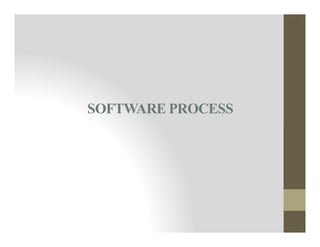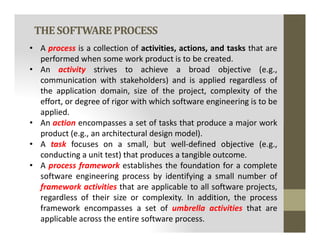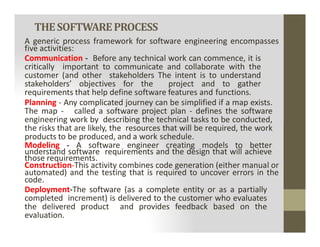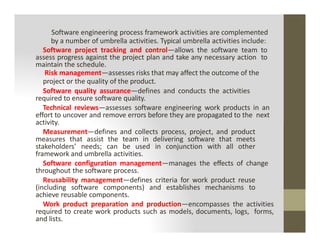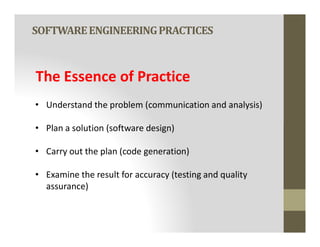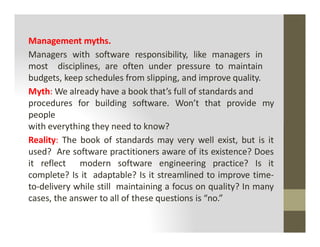The document outlines a software engineering framework that includes activities such as communication, planning, modeling, construction, and deployment, supported by umbrella activities like project tracking, risk management, and quality assurance. It emphasizes principles for good software practice, including delivering value, simplicity, and foresight for reuse. Additionally, it addresses persistent software myths that can impede effective software development, highlighting the importance of clear communication and established requirements.

